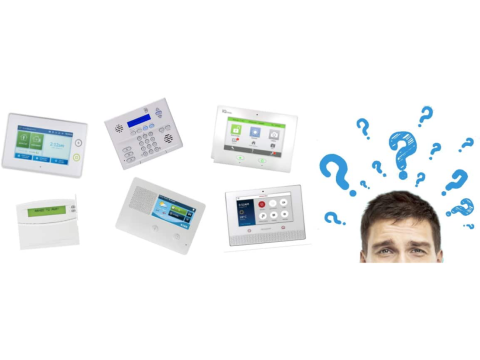Essential Guide to Security Alarm Control Panels: Types, Installation, and Selection
Security alarm control panels (PCPs) are the core of any alarm system, orchestrating the operation of sensors and relaying critical information during emergencies. Here, we explore their purpose, types, installation, and how to select the right control panel for your needs.
Functions of Security Alarm Control Panels
Control panels in security and fire alarm systems (OHS) serve several crucial purposes:
- Monitoring: Track the status of connected alarm loops (circuits) or sensors.
- Indicating Modes: Provide visual and audio indicators for system status.
- Alerting: Generate and transmit alarm or maintenance signals.
- Automation: Manage external devices and other systems.
Key Features and Modern Options
Connection Capacity
PCPs are categorized by the number of alarm loops they support:
- Small Systems: Up to 5 loops.
- Medium Systems: 5 to 20 loops.
- Large Systems: Over 20 loops.
Advanced Programming and Functionality
Modern PCPs offer:
- Group Management: Combine loops based on function or zone.
- Custom Settings: Tailor loop behaviors and operational modes.
- Enhanced Security: Use delay settings or touch memory keys for controlled access.
Addressable Systems
Unlike traditional PCPs, addressable systems can manage up to 100 devices on a single two-wire line. Each device has a unique identifier, enhancing precision and reliability. Popular examples include the "Orion" security system.
Types of Alarm Control Panels
Classic Systems:
- Limited to two states—"normal" and "alarm."
- Suitable for small-scale applications but lack detailed diagnostics.
Addressable Systems:
- Use digital communication for high accuracy.
- Ideal for complex configurations requiring robust monitoring.
Wireless Systems:
- Simplified installation using radio communication.
- Often combined with wired interfaces for hybrid solutions.
Installation Guidelines for PCPs
Proper installation ensures system efficiency and safety:
Safety Compliance:
- Mount on non-flammable surfaces.
- Ensure proper grounding and wiring insulation.
Physical Security:
- Install in restricted-access areas or lockable enclosures.
- Use tamper-proof designs to prevent unauthorized interference.
Redundancy:
- Employ backup power supplies to maintain functionality during outages.
Environmental Considerations:
- Use metallic casings for enhanced fire safety and electromagnetic resistance.
Selecting the Right PCP
When choosing a PCP, consider the following:
Capacity and Expandability:
- For homes or small offices, 2–4 loops suffice.
- For larger sites, opt for addressable systems for scalability.
User Convenience:
- Prioritize modern access methods like touch memory keys or proximity cards.
Power Management:
- Evaluate systems with built-in power supplies for small setups.
- For larger configurations, consider external power blocks for additional load handling.
Material and Design:
- Plastic Housings: Aesthetic and safe for general use.
- Metal Casings: Durable and suitable for high-security environments.
Popular Models and Recommendations
- Classic Systems: "Granite," "Quartz," "Nota."
- Addressable Panels: "Orion" by NPO Bolide.
- Wireless Systems: Integrated solutions like "Astra RIM" for homes and offices.
- Power Supplies: "Skrat," "Reserve," "RIP," and "Parus."
Conclusion
Selecting and installing the right security alarm control panel ensures effective protection tailored to your specific needs. From homes to industrial complexes, understanding your system’s requirements is the first step toward reliable security. For expert advice and top-rated solutions, visit safsale.com

